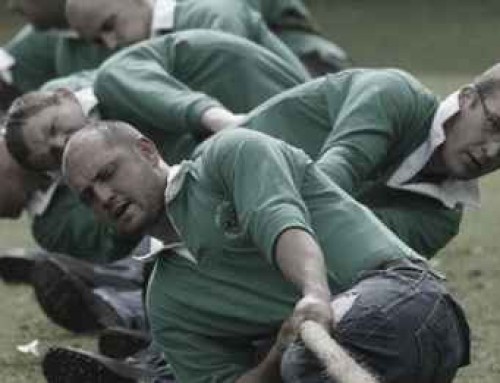By John J. Murphy
For the past 33 years I have worked as a transformational business consultant, helping organizations worldwide build high-performance work environments. The keyword here is environment. Albert Einstein once said, “The field is the sole governing agency of the particle.” In my experience, the field is the culture. It is the environment we live and work in. It is a form of energy that impacts the way we think, feel, look at things, and behave. Like gravity, we may not see it, but we certainly feel it, especially when we move from one culture to another. Fish do not survive long outside of water.
As a metaphor, think of this like cultivating a garden. You know the seeds and plants are meant to grow but they require certain conditions – a healthy environment. They may all be different, but they are meant to flow, to blossom, to bear fruit. This is their essence. It is not something they try to do. It happens naturally if they have what they need to prosper. We as human beings are no different in this regard. We are meant to grow, to prosper, and to contribute. We feel good when we do this. It is our essence.
The power of culture
Mindful leaders understand the power of culture. In practical terms, it is the way things get done. It is “the way we do things around here.”
You can see it reflected in attitudes, behavior, language, and results. It reveals vision, values, principles, and priorities. It is what brings mission statements to life. In high-performance organizations, culture is the collective energy that brings out the best in people, empowering them to thrive, not just survive.
The next time you visit a friend’s or family member’s household, notice how certain things feel different. Most likely, you will experience different norms, rules, and expectations – all reflecting different values and beliefs. This is not a matter of right and wrong. It is simply the “way” other households are run. Culture is the way.
In business, culture translates into systems, structures, job descriptions, policies, and procedures. This is how work gets done. In some cases, the “way” work gets done is overly complex, cumbersome, confusing, and even dysfunctional. We see it in the way we hire people, the way we train them, the way we order and store material, the way we process work, the way we interact with one another, the way we solve problems, the way we resolve conflict, and the way we correct mistakes. Mindful leaders make note of this.
As W. Edwards Deming once said:
Put a good person in a bad system and the bad system wins, no contest.
I see this all the time. Good people doing their best in a poorly designed system. There may be signs on the wall, advocating values like teamwork and respect and excellence, but the talk is not aligned with the walk. Words alone do not translate into culture. Culture is a feeling, like love, not a dictate.
Creating a mindful culture
Like a master gardener, highly effective leaders place culture as a top priority. We seek to provide people with a fertile, nourishing, growing environment. In doing so, we insist that our vision, values, and guiding principles align with our organizational design, development, and behavior. For example, if we say we value excellent customer service, we design it into our business model. This does not mean adding more service reps to a call center to respond to complaints. It means eliminating the complaints. If we say we value teamwork, we design it into our organizational structure so that we perform like an orchestra, not a composition of silos with functional experts incented by independent measures. Yes, everyone has a different role to play but we are aligned to play as one. We focus on value stream flow end-to-end, not functional efficiencies. We design cross-functional teamwork into our operation so that it is natural to work together with harmony, rhythm, and balance. Now, rather than take a month with six people to do four hours of actual work, we get it done in a day with two people.
Think of culture and process flow this way. Remember the process you had to use when you wanted to watch a movie on your television that was not playing at that time? Chances are, you traveled to a video store, picked out the movie, stood in line, paid for it, traveled home, loaded the movie into a video machine, sat on the couch and pressed “play.” This process had many steps which you could define, map, and time, and it had costs you could calculate. You could also argue that this is the “way” this work gets done. It is not just a series of tasks. It is cultural, perhaps even habitual. Now think about how this process has changed – even been eliminated. Chances are, you can now watch any movie you want without leaving your couch. This saves you time, effort, and money. In business terms, you now have a Lean process and a new standard for excellence. You have a new way.
So, how does a mindful leader change culture? We change “the way we do things around here” by changing the way we do things around here. No, this is not a riddle. To paraphrase Gandhi, we “become” the change we want to see in the world. We change culture by changing work design, operating systems, organizational structure, measurements, incentives, policies, procedures, and anything interfering or disrupting creativity, inspiration, innovation, and growth. We mindfully pull the weeds and find ways for people to unite, synergize, and prosper.
We remove obstacles, constraints, and barriers to growth. We identify and eliminate wasteful practices, unnecessary duplication, non-value-added activity, repeated errors, overcomplexity, and confusion. And we do this with our people, not to our people.
We involve them in finding ways to cultivate a more united, connected, positive, and inspiring work environment. We create a new “way” by using the new way! We walk the walk.
John J. Murphy is an author, speaker, entrepreneur, business consultant, and coach and has been for over 30 years. He has traveled as many as 51 weeks out of 52, teaching in dozens of countries around the world, with languages and cultures he knew little about.






Leave A Comment